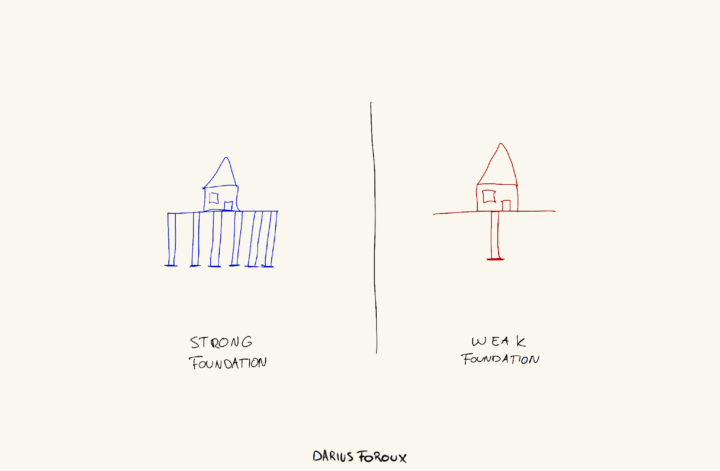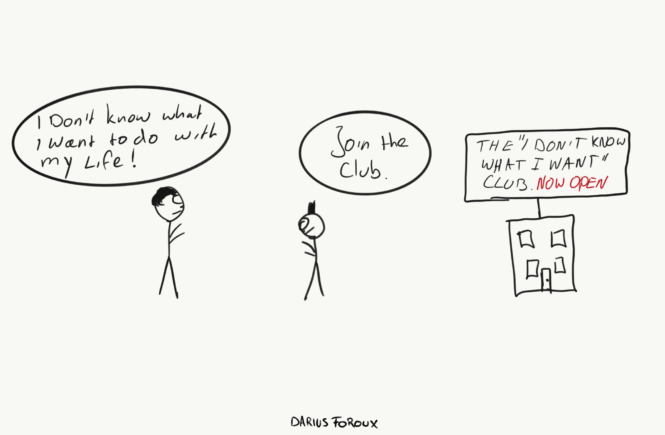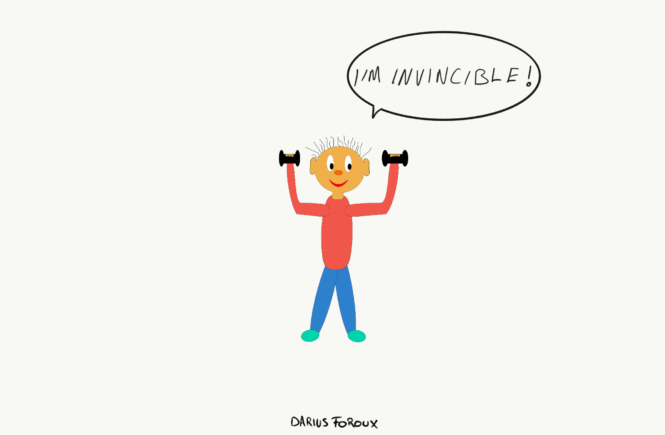Most people tend to either overestimate or underestimate themselves. We hardly ever have a real picture of our abilities.
Think about it: How often have you seen someone (or even yourself) claim to be good or bad at one thing, only to find that their result shows otherwise?
For example, you may think you’re a terrible public speaker, but when you actually give a presentation, people compliment you on your confidence and delivery. Or maybe you believe you’re an amazing cook, but your friends think it’s not that great.
Our personal benchmark is often different from how others perceive us. And this can have both positive and negative effects on our lives.
On the one hand, it’s important to set high standards for ourselves and continuously push ourselves to improve. On the other hand, we can also be too hard on ourselves and limit our own potential because our benchmark is based on inaccurate perceptions.
Creating your true personal benchmark
Knowing what you’re good at is important in succeeding at anything. As the management expert, Peter Drucker, said:
“One cannot build performance on weaknesses, let alone on something one cannot do at all.”
I highly recommend reading Drucker’s Managing Oneself. It’s a very short book you can finish in one sitting. I’ve made a habit of reading it every year to remind myself about my own strengths and weaknesses.
The science backs this up, too. Research in psychology points out a phenomenon known as the Dunning-Kruger effect when people with low ability at a task overestimate their ability. On the flip side, those with high ability underestimate themselves. 1Source: Britannica
So, how do you know if you’re truly good or bad at something? How do you set your personal benchmark? Try asking yourself this:
“What have I done in the past that’s most similar to the goal I want to achieve now? And what were my results?”
For example, imagine joining a race with multiple distances. You don’t want to run a 50-kilometer race if the longest distance you’ve ever run is just 10K. Doing that will likely get you injured or worse.
But with a 10K baseline, you can realistically challenge yourself by joining a half-marathon or 21K race. Going for, say, 5K won’t challenge you and help you grow.
Your personal benchmark shows you how far you’ve gone. And how high you should aim.
Over time, as you overcome your own records, your personal benchmark will increase. Then, you can keep growing yourself.
4 steps to knowing yourself better
To accurately analyze your abilities, focus on these four steps:
1. Look inward. Detach your emotions and ego from the equation. Be brutally honest with yourself about what you did and didn’t achieve in the past.
2. Use Quantifiable Metrics. Use hard data to measure your abilities instead of relying on abstract feelings or vague impressions. Going back to the running example: What’s your longest distance run? The maximum challenge you can give yourself is to double that distance.
3. Compare Against Your Own Benchmark. Avoid comparing yourself to others. Everyone’s journey is different. Focus on whether you’re doing better than you were previously – that’s the comparison that matters.
4. Regular Review and Update. Self-assessment is an ongoing process. It’s important to regularly revisit and revise your personal benchmarks based on recent achievements or setbacks.
Life is all about steady improvement – raising the bar bit by bit while ensuring that each new goal is achievable based on past performance.




